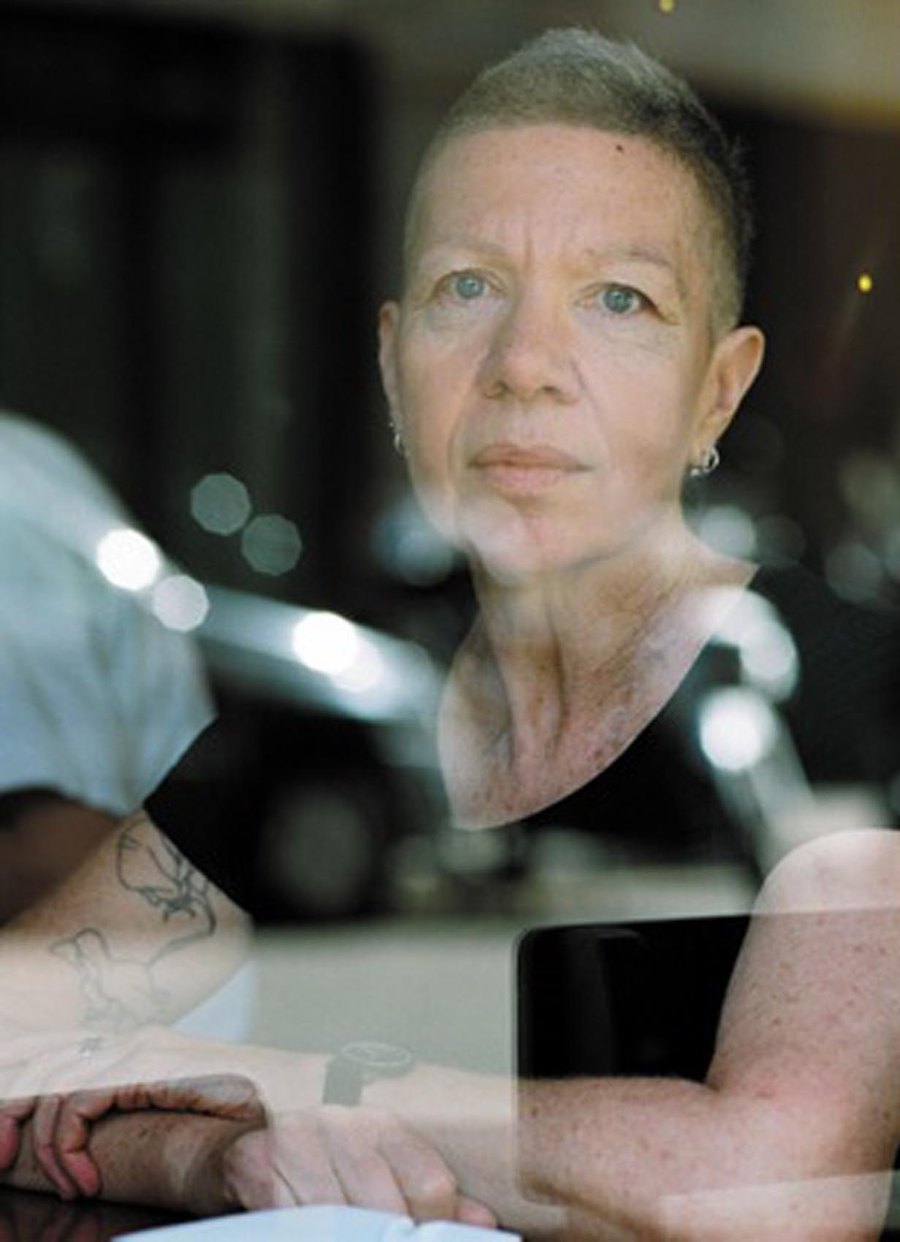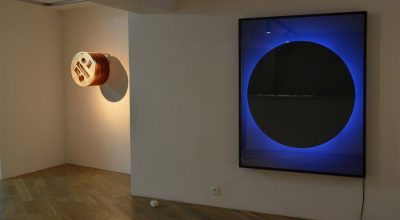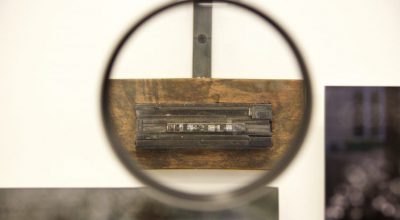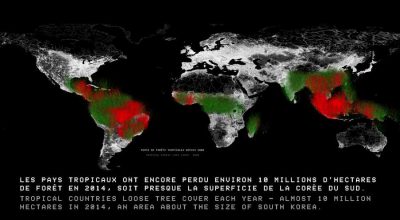
ÉLISABETH LEBOVICI: WHAT AIDS HAS DONE TO HER
Activist, critic and art historian Élisabeth Lebovici’s plume transits the sinuosity of a paradox without contradiction.[1] Silence and voice, life and death, ethics and aesthetics. Throughout her career, the fight against HIV/AIDS and other causes fought by the LGTBQIA+ community imbue a dense corporeality into her particular way of theory making. A visible lesbian, some of her experiences lived during the most algid moments of the AIDS epidemic resonate in her book Ce que le sida m’a fait: art et activisme à la fin du XXe siècle [What AIDS Did to Me: Art and Activism at the End of the XXth Century] published in 2017. At a time of new uncertainty and viral panic, looking back at the AIDS epidemic is a sallow reminder of the indifference that medical and political powers can have for the rights of sexual minorities, but also an invitation to live once more the stridency with which artists and activists fought in order to make their voices heard.
aliwen: Please tell me a little bit about your background. Where did you grow up? How did you decide what you would study as a career path and how do you remember your days as a student?
Élisabeth Lebovici: I grew up in Paris (actually, I was born in a suburb nearby) and went to school there. My high-school (“lycée”) was an all-girl public school. My comrades were, for most of them, very right wing and quite antisemitic, to say the least. I came from a non-religious Jewish family, that was situated on the left (my parents were Communists before moving slowly but drastically), decimated in the Nazi camps, my parents and sister were not very vocal, it kept being a horribly painful subject, that they were trying their best to avoid, and “integrate”. So I understood antisemitism through the performativity of the insult. I didn’t fit. It led to an enduring feeling of injustice and permanent revolt, for a long time.
I’m part of a post-68 Generation, where you didn’t make so many career plans. I think I took up art history because visuality was my own terrain, the one I decided to choose, maybe to make myself visible. I studied at the University of Paris X (in Nanterre), not far from the slums of the Algerian migrant workers. We all would give French literacy classes. It was the 70’s, you know… This is where I met my first friends, my first chosen community. I worked days in a state porcelain manufacture and danced all night. Then, I left for New York, at the end of the 1970’s (1979) because I had gotten, by chance (I had responded to an ad, they probably wished a French person) into the Whitney Museum Independent Study Program (ISP) a curatorial and artistic program right in Manhattan. Those were incredibly great and broke years, you know, the “downtown” years. I had the most incredible experience, and stayed. Began a Ph.D. about “money in the discourse of American artists, 1980-81”
a.: Paris was one of the European cities most affected by the HIV/AIDS epidemic. A cultural epicenter of the western world, the artistic and literary scene of the latter half of the twentieth century was in great part configured by the transgressive voices of LGBTQIA+ people. I am thinking about the stark contrast between the Paris depicted by the 1975 film Les intrigues de Sylvia Couski (Adolfo Arrieta), that of the Groupe de libération homosexuelle [Homosexual Liberation Group] and of Severo Sarduy, and what would ensue in the 80’s. How do you think the epidemic affected the Parisian cultural scene?
É.L.: Oh! Very very much. Between the sexual liberation years and the AIDS epidemic, there was a kind of clash. It took years to unbound the clash between having won pleasure and sexual freedom (homosexuality was depenalized in 1982) and being confronted to a virus that was mostly transmitted through sexual encounters or shooting drugs [through “blood, sperm, body fluids and the law” as we said in France]. It took years and a lot of activism to make clear that there was absolutely no causal relationship. Homosexuality is not a cause of AIDS, HIV/AIDS is not the result of a death drive, although when you read gay writer Hervé Guibert, for instance, it is not so sure.
But to go back to your question, it incredibly affected the Parisian cultural scene. There’s a whole generation of artists, of thinkers, of critics, of performers, of dancers, but also of their public, their audience, which is missing. As you know, people died very young, at 25, 30, they didn’t have the time to pursue their endeavors. The panic was intense. But I wouldn’t say it stopped with the appearance of cocktail therapies after 1996. You know, people still die; and sometimes you read about the beliefs that still surround HIV/AIDS, even with PrEP, even with treatment, and you are stunned that such fake ideas are still around.
a.: In interviews you sometimes remember the passing of close friends early in the 80’s: how did the HIV/AIDS epidemic affect your own life and work?
É.L.: Well, it thoroughly affected my life. You know, as soon as 1983, people I knew began dying. My dearest, best friend died in 1986. For two years, he was sick with different opportunistic diseases ― he tried to hide it, as many people did. Without alluding to AIDS, of course we knew ― we, the chosen community, the friends. We took care of him as he was less and less able to cook, to move, to talk. When he died, his formerly estranged family arrived in Paris, took his corpse from the hospital morgue, and cleared everything except a few books and records out of his tiny apartment. We were left with nothing. And then, it continued, one after the other. We were trying to help, to take care and my community disappeared. My art world was sinking.
I’ve written extensively about my staggered numbness (sidération), that lasted many, many years. It doesn’t mean that I wasn’t working. Even the magazine (Beaux-arts Magazine) and afterwards, the newspaper (Libération) I had joined lived with AIDS, within the AIDS crisis, being affected by loss and mourning. One day, an HIV positive friend of mine told me with enthusiasm about these meetings he was going to; it was Act Up-Paris. The first words of welcome speech were: “Act Up comes from the homosexual community”. I felt at home. I was part of it. I fitted in. Grief became rage. I begin to learn how much the epidemic was a “total social fact” to quote anthropologist Marcel Mauss.
a: The Spanish speaking world has recently welcomed your book Sida, published by et al. (ARCADIA and Museu d’Art Contemporani de Barcelona) early in 2020. In it, we get a taste of your very personal writing style, which is as rigorous as it is unorthodox. From a very intimate form of essay, you often visit several different objects such as artistic practices, critical theory, film, literature, political action and testimony in an effortless free association. How did you come to develop your voice as a writer? What advice would you give to newer intellectuals that are trying to find their own voice?
É.L.: First, thank you. Writing as I did was, really, the only solution to me. I’m not making an understatement! I wanted to write while being inside the writing, as I wanted to be in AIDS, within AIDS and certainly not “upon” AIDS. I hate it when I read in small blurbs or wall labels about artists who work “upon”, or “on” something, even worse when it’s “on AIDS”. If you work upon something, you are above it, which means you are in a dominant position. You dominate your subject, instead of working within the texture, the “queer structure of feeling” as artist activist Gregg Bordowitz would say. So, in order to “dive in”, what I did was to look back at articles or essays I had been writing [back then], and to rewrite them thoroughly. That’s what I did. Rewriting from my point of view of today, free associating with pieces of already made writing, working with the grief, the loss, the many lacks that were in the texts, often as subtext. Then, I couldn’t make a draft in three parts with a thesis, an antithesis, a synthesis or whatever…There was none! I didn’t have a point to make. So I weaved some of the chapters as a kind of very loose fabric, keeping the holes there. And I called it art criticism.
Of course, I’m not alone in that. I very much admire the work of Monique Wittig, I have read in awe the memoirs of Samuel R. Delany and of Douglas Crimp. The model, too, was Carla Lonzi’s Self Portrait (weaved of artists’ interviews patched together, in a community that builds an unfinished, hollow portrait of the I of the critic/ author/ interviewer, dissolved and reconstructed as a political we). And you know, after this book (1969), Carla Lonzi disappeared as a critic, to continue her activity as feminist separatist.
a: Chilean writer and critic Lina Meruane has written about what she calls the «female disappearance syndrome» in regards to the public opinion and cultural productions surrounding the HIV/AIDS epidemic and the secondary or auxiliary role that cis and trans* women are many times attributed. The transgressive artistic practices of lesbian collectives such as fierce pussy and GANG (EE.UU.) or LSD Lesbianas Sin Dudas (Spain) called attention to the fact that the patriarchal omission of female bodies from the HIV/AIDS crisis ― both directly and indirectly affected by it ― added unnecessary difficulty to the already hard job of obtaining up-to-date information and appropriate medical treatment or welfare programs for women in the late 80’s and in the 90’s. Do you think that the discourse surrounding the role of women during the HIV/AIDS epidemic is shifting today? I am considering the important work of visible lesbians and HIV/AIDS activists such as J Triangular (Colombia-Taiwan) who did the 2019 Visual Aids Curatorial Residency on this precise topic.
É.L.: Hopefully. It is crucial. The story of the AIDS epidemic, which is one story amongst many other ways of telling the story, begins in 1981 as history. Not as herstory. We know now (but it was known then too) that women have been invisibilized, eradicated from this history. Cis and trans women were excluded from the clinical trials, they were not aimed at in the prevention campaigns, their symptoms or opportunistic diseases were even excluded from the repertory of AIDS markers ― for instance, the signs which show when HIV infection becomes AIDS ― which were tailored to men. Women didn’t get the disability benefits that would enable them to provide minimal support for themselves. And then, invisible amongst the invisible, were the lesbians, the queer women, twice discriminated: first because they were women, and second because they were queer, or as Monique Wittig enounced, because “lesbians are not women”, and they have no place as such in the heterosexual patriarchal binary system. I’m still told sometimes that “lesbians don’t get AIDS” ― of course, they don’t fuck, of course they don’t use sex toys, of course they don’t shoot drugs, etc. Queer sexualities, queer bodies, queer practices, queer loves, queer spaces, queer care ― so many lesbians were crucial in anti-AIDS activism and caregiving ― have been now rescued from the archive.
In my book “within AIDS” I wanted to focus on lesbians ― their visibility, their visualities, and their role amongst the shaping of a story which is now revised, and hopefully will be revised and revised again, challenging the western, white and still very binary canon.
a: You are a founding member of the Lesbiennes d’Intérêt Général [Lesbians of General Interest] donation fund since 2016, which seeks to aid the visibility and wellbeing of lesbians in France through grants that are destined for their arts, culture, education, health, sports, and research, amongst other areas. How has this experience turned out thus far? What advice would you give to people who are a part of the lesbian community or that cherish the lesbians in their life and seek to start similar initiatives?
É.L.:It is the first of its kind in France, although foundations such as Mama Cash, in the Netherlands, or Astraea, in the US, exist since a long time. In the board of Lesbiennes d’Intérêt Général, we are all activists. We all have sensed the necessity of dealing in France (where there is a strong tradition of solidarity and of volunteer work) with money and funding, which seem swear words around us! In the LGBTQI* communities, self-identified lesbians are the less endowed with money. A study has shown that less than 5% of the money spent for LGBTQI* initiatives are spent, specifically, on lesbians. We are always expected to do things for free. Organizations which very efficiently help particularly lesbian and queer asylum seekers function this way. It is mind-blowing to recognize the efforts and the success of giving time and energy but how long will that system work, without a general burn out? In the former Eastern countries of Europe, some lesbian organizations are able to employ people who receive a salary. In France, like Italy and other Western European countries, it is not the case. I feel it is the same for LGBTQI* activists than for cultural workers and now, with the event of the COVID-19 crisis, we begin to understand our labor is not recognized as such, which means that we shall get nothing in replacement for the nothingness we were paid for! On the one hand, it’s incredibly rewarding to see so many queer women with very little money still giving what they can. But we still need to find our great lesbian philanthropists ― like our role model, the XIXth century painter Rosa Bonheur, when she stipulated by will to give all their inheritance, her studio, her rights, all what she had earned to her female partner! So far, we’ve been able to help a lot of projects, whether they are about health education, access to psychological counseling, radio programs, giving a hand for an exhibition, or helping to pay a collective of translators; we’ve also helped consciousness raising and lesbian visibility programs in Cameroun. A week ago, we launched an urgent call in relationship to the event of the coronavirus: there is already a study that states that lesbians are more subject to violence, more harassed by their family or environment; that those of us who are asylum seekers, escaping from a horrific history, are left with nothing, have nowhere to confine themselves, and that the situation is prompt to revive their trauma. It is a question of survival, in the short and in the long term, it also is a question of visibility.
[1] I want to thank Alejandra Villasmil for introducing me to Élisabeth Lebovici early in 2019. Once again, thank you very much Élisabeth, for your friendly comradery and thoughtful viral transgression of the written word. I hope we continue collaborating, both in cyberspace and ― maybe ― also in the perlocutionary space: that is one of the kuir utopias that keep me hanging on during this crisis.
También te puede interesar
JAVIER TORO BLUM Y BENJAMÍN OSSA: TOUT CE QUI EST DROIT MENT
Luego de su paso por la feria Art Lima, los artistas chilenos Javier Toro Blum y Benjamín Ossa inauguraron el pasado 11 de mayo la exposición "Tout ce qui est droit ment", en la...
VOLUSPA JARPA INDAGA EN LA OPERACIÓN GLADIO EN SU ÚLTIMA EXPOSICIÓN
La artista chilena Voluspa Jarpa presenta a partir del 3 de junio en la galería mor charpentier de París "Waking State", una muestra que reúne siete obras en torno a algunas de las intervenciones...
NOSOTROS LOS ÁRBOLES
La Fundación Cartier, en París, presenta hasta el 10 de noviembre la exposición "Nosotros los Árboles" (Nous les Arbres), en la que una comunidad de científicos, filósofos y artistas que han desarrollado un vínculo...



